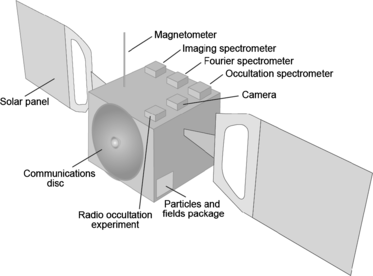The Albedo of Venus is greater than 70 percent.
From Radiation in the Atmosphere of Venus Dmitry V. Titov etal. http://lasp.colorado.edu/~espoclass/ASTR_5835_2015_Readings_Notes/Titov_Et_Al-EVTP.pdf
The total solar flux at the Venus orbit is 2622 ± 6 W/m2 (Moroz et al., 1985). Due to its high albedo the planet absorbs only 157 ± 6 W/m2 on average, less than that deposited on Earth (~240 W/m2), despite the fact that Venus is 30% closer to the Sun.
The measured data for the infrared energy being emitted from Venuses nightside appears to be vague, dissembling, and is probably completely fictitious. Likely the raw and uninterpreted data would show that the heat is radiating from the nightside planetary surface and not from Venuses atmosphere.
The greenhouse model has no relevance regarding the surface temperature of Venus. A geologically recent collision with a massive object (interstellar?) caused Venus to revert to a completely molten state. Today we are seeing a cooling planet whose surface temperature is still too high to allow it to form an atmosphere having a normal density.
Why didn’t NASA and other scientific organizations just report these plainly visible and scientifically consistent facts?
Whose agenda was being advanced by scientific gaslighting on a planetary scale?
This conspiracy was not about global warming. That would come along later.
According to Houston, NASA, and the United States Geological Survey nothing from outside of this Solar System has ever affected the Earth or the other planets.
Except for those interstellar events (impacts) which created the geological conditions for oil and other valuable ore deposits. The oil capitol of world (Houston) not affecting the science in the least bit.
It appears that Mars (northern hemisphere disrupted and melted) and Venus (destroyed and rendered incapable of supporting life) had impacts or collisions in the geologically recent past (<500 million years ago).
(speculation) Under the category of “Can this get any better?” What if this destruction was contemporaneous?
What if one of Earth’s extinction level events had occurred within this crowded time frame?
Either impact event (Mars or Venus) would have filled the inner Solar System with lots of debris.
Does anybody have any questions? (not involving psychiatry )
)
From Radiation in the Atmosphere of Venus Dmitry V. Titov etal. http://lasp.colorado.edu/~espoclass/ASTR_5835_2015_Readings_Notes/Titov_Et_Al-EVTP.pdf
The total solar flux at the Venus orbit is 2622 ± 6 W/m2 (Moroz et al., 1985). Due to its high albedo the planet absorbs only 157 ± 6 W/m2 on average, less than that deposited on Earth (~240 W/m2), despite the fact that Venus is 30% closer to the Sun.
The measured data for the infrared energy being emitted from Venuses nightside appears to be vague, dissembling, and is probably completely fictitious. Likely the raw and uninterpreted data would show that the heat is radiating from the nightside planetary surface and not from Venuses atmosphere.
The greenhouse model has no relevance regarding the surface temperature of Venus. A geologically recent collision with a massive object (interstellar?) caused Venus to revert to a completely molten state. Today we are seeing a cooling planet whose surface temperature is still too high to allow it to form an atmosphere having a normal density.
Why didn’t NASA and other scientific organizations just report these plainly visible and scientifically consistent facts?
Whose agenda was being advanced by scientific gaslighting on a planetary scale?
This conspiracy was not about global warming. That would come along later.
According to Houston, NASA, and the United States Geological Survey nothing from outside of this Solar System has ever affected the Earth or the other planets.
Except for those interstellar events (impacts) which created the geological conditions for oil and other valuable ore deposits. The oil capitol of world (Houston) not affecting the science in the least bit.
It appears that Mars (northern hemisphere disrupted and melted) and Venus (destroyed and rendered incapable of supporting life) had impacts or collisions in the geologically recent past (<500 million years ago).
(speculation) Under the category of “Can this get any better?” What if this destruction was contemporaneous?
What if one of Earth’s extinction level events had occurred within this crowded time frame?
Either impact event (Mars or Venus) would have filled the inner Solar System with lots of debris.
Does anybody have any questions? (not involving psychiatry



